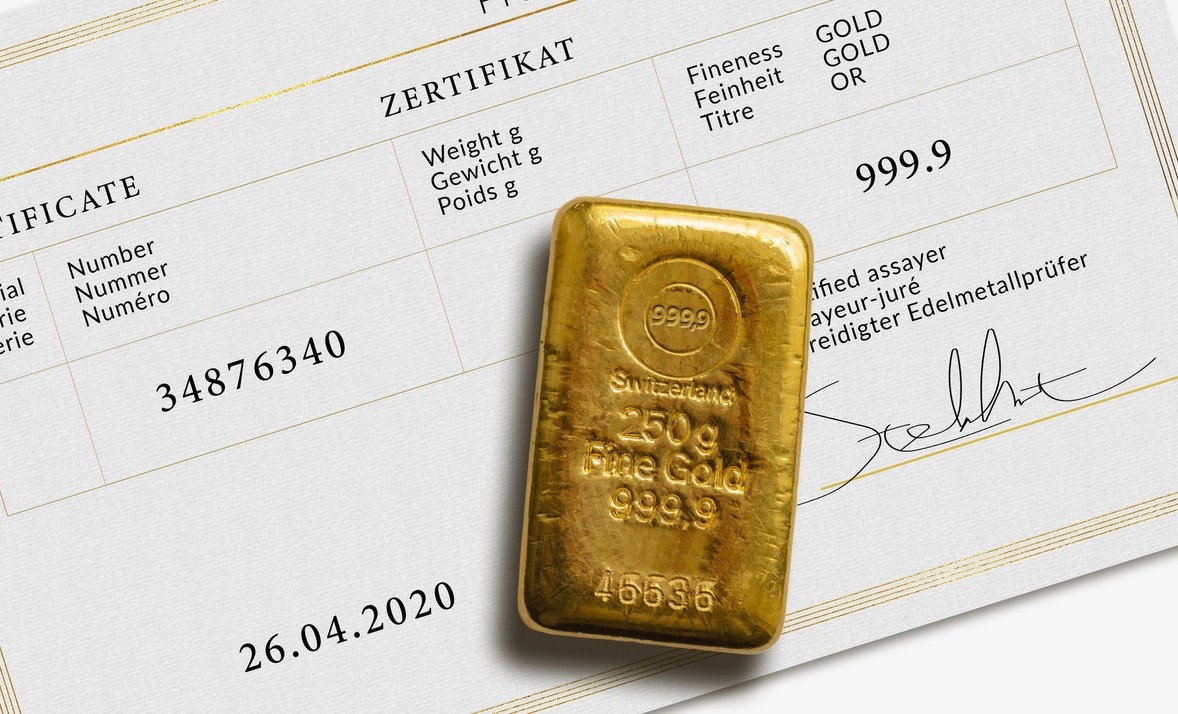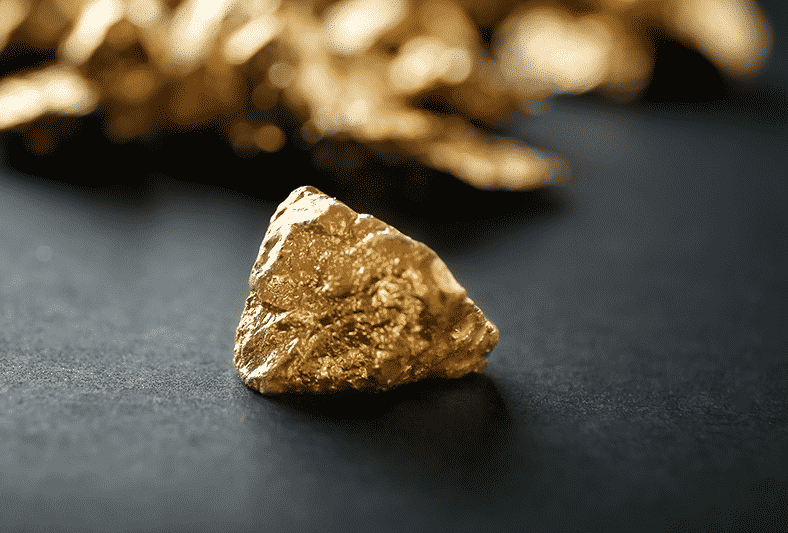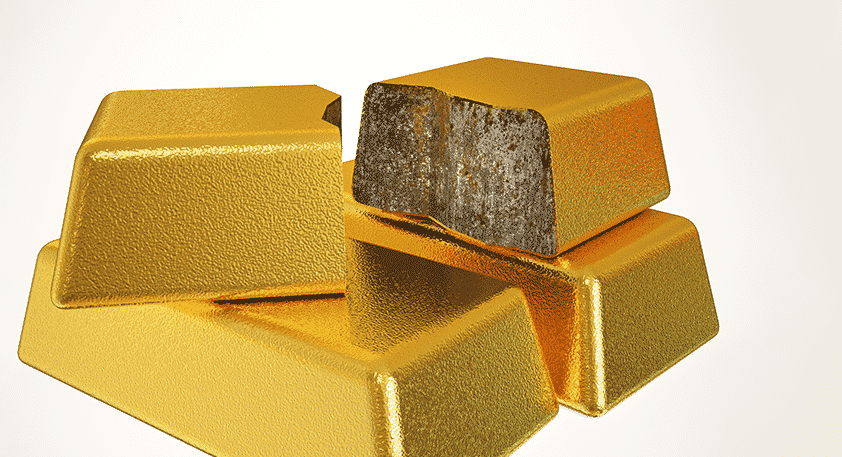PRECIOUS
METALS
COUNTERFEITING
COUNTERFEIT AND FRAUD PROTECTION: PRECIOUS METAL PRODUCTS
Precious metals are naturally occurring rare chemical elements. Today, the following metals are considered as precious metals: rhodium, platinum, gold, palladium, iridium osmium, rhenium, ruthenium, germanium, beryllium, silver, indium, gallium, tellurium, bismuth and mercury. It is interesting to note that for quite some time, aluminum was also considered a precious metal, but today that is no longer the case.
Precious metals have high economic value and are often used as investment vehicles in trading, preservation of value, coinage, art and jewelry, and of course the electronics and medical industries.
Looking at the supply of precious metals, for the four main metals – gold, silver, platinum and palladium – 70–80% of the yearly supply comes from new mining; the other 20–30% is retrieved through recycling (CME).
For gold, the total global yearly supply is approximately 3700 metric tons, worth about $150 billion. For comparison, silver exceeds 30,000 metric tons per year.
So, what are the potential problems that may occur when working with precious metals?
- Responsible sourcing
- Metal purity
- Weighting
- Tampering

CHALLENGES WITH PRECIOUS METALS
RESPONSIBLE SOURCING
Responsible sourcing, according to the International Chamber of Commerce, is “a voluntary commitment by companies to take into account social and environmental considerations when managing their relationships with suppliers.” It goes, of course, far beyond this, and today many refineries adopt this approach, which allows tracking and tracing of precious metal’s provenance, handling and transformation. Very often, systems are put in place using technical solutions, for example, blockchain and third party-based auditing and certification.
METAL PURITY
Playing with the purity of precious metals in order to artificially increase weight has been done throughout history and is one of the biggest problems to tackle. The fineness or purity of precious metals, that is the weight of fine metal therein in proportion to the total weight, can be modified by adding other metals or impurities. Detecting or verifying precious metal purity is a complicated and expensive process. Possible solutions are based on magnetic tests, acid tests on stone, ultrasonic tests, testing electrical properties, X-ray fluorescence (XRF) and spectrography. For end-users, the cost of these tests is often out of reach. In the case of minted products or bullion products, end-users often use the brand reputation of the refinery as a means to authenticate the quality, value and genuineness of the product. This has other problems, however, as it is very easy to create lookalikes of bullion and minted products.
WEIGHT
Although obvious, it is worth mentioning that a biased weighting of precious metal products has been observed throughout history and creates systematic damages to users. Imagine a 1 -kg gold bar weighing only 999 grams. You would say that this may be within the acceptable limit of weighting error, but if done systematically, the refinery saves 1 kg of gold for every 1000 bars it makes. It is of course not much but can make a difference. The weight of precious metal products can be easily verified by anyone and should therefore not be forgotten.
TAMPERING
Product tampering can take various forms. But the objective is again to artificially increase the product’s weight by the addition of less expensive materials. Examples are the opening and filling of gold bars with tungsten, plating of tungsten with gold, or even using lookalike metals. Similar to the purity issue, tampering is often difficult to detect, and refineries often put technologies in place to increase trust in their brand.
ACCREDITED BY THE LBMA
AlpVision Fingerprint solution for precious metals is an officially accredited Gold Bar Security Features of the a LBMA and part of the Gold Bar Integrity (GBI) initiative.
TODAY’S SOLUTIONS FOR MINTED AND BULLION PRODUCTS
- Serial numbers: Most minted and bullion products carry a serial number allowing them to be tracked back to production and followed throughout the supply chain.
- Certificates: Some products are shipped with a specific certificate to certify their authenticity and quality.
- Security packaging: Some products, especially minted products, are shipped in security packaging protecting the product from tampering and also guarantee authenticity and quality.
- Special security features: Certain refineries add special features onto bullion and minted products. These features can be of different natures and may require special revealing devices. Examples include holograms, invisible inks (UV, IR), optical variable inks, fluorescent inks, moiré-based features, etc.
- Fingerprint solutions: More sophisticated approaches register the fingerprints of minted or bullion products. By linking these to the serial numbers, it is possible to provide very high security, as it allows 1) authentication of the product and the underlying brand and 2) detection of product tampering, such as drilling and filling. Fingerprint solutions are, for example, provided by AlpVision. Authentication is performed using an ordinary smartphone.
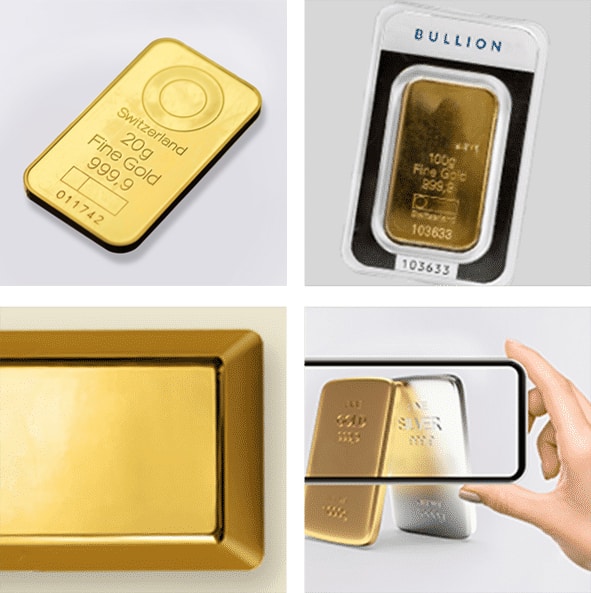
Counterfeit Products Market

PHARMACEUTICALS
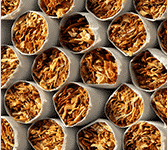
TOBACCO

GOVERNMENT

PRECIOUS METALS

WINE & SPIRITS
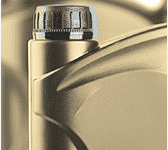
AUTO LUBRICANTS
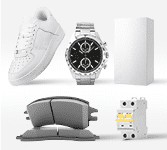
OTHER INDUSTRIES
Our digital invisible technologies for product authentication and counterfeit protection can be applied to a broad range of branded products across a multitude of industries, including household appliances, electromechanical parts (e.g., circuit breakers), agrochemicals (e.g., pesticides), cosmetics, oil & gas (e.g., lubricants), consumer goods, food & beverage and more.
Would you like to see how this technology can be applied to your product?
Contact us!

